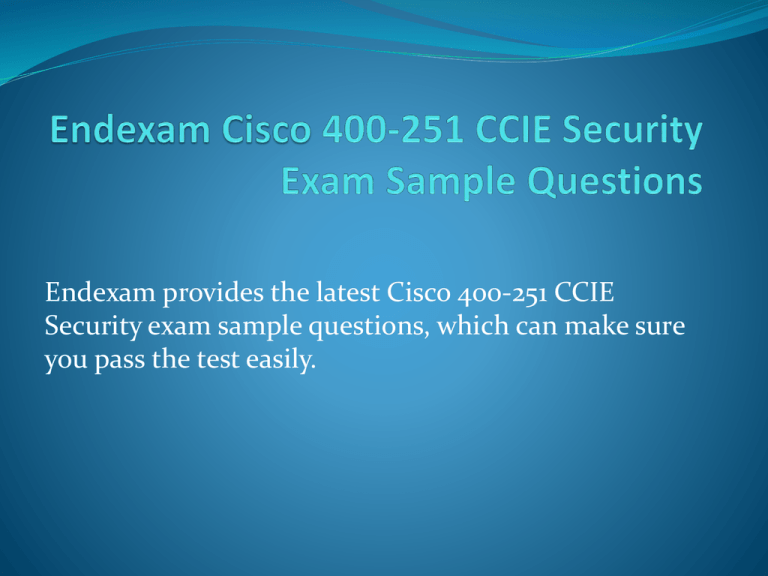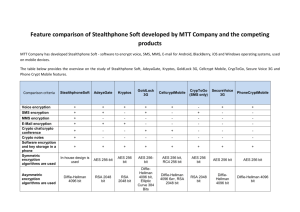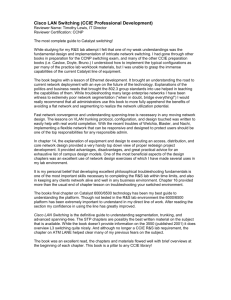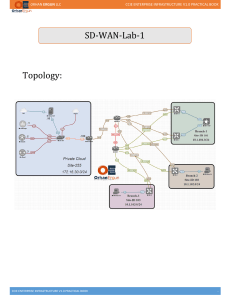Cisco 400-251 CCIE Security Exam Sample Questions
advertisement

Endexam provides the latest Cisco 400-251 CCIE Security exam sample questions, which can make sure you pass the test easily. 400-251 CCIE Security Exam Info Exam Number 400-251 CCIE Security Associated Certifications CCIE Security Duration 120 minutes (90 - 110 questions) Available Languages English Register Pearson VUE 400-251 CCIE Security Exam Topics 1.0 Perimeter Security and Intrusion Prevention 21% 2.0 Advanced Threat Protection and Content Security 17% 3.0 Secure Connectivity and Segmentation 17% 4.0 Identity Management, Information Exchange, and Access Control 22% 5.0 Infrastructure Security, Virtualization, and Automation 13% 6.0 Evolving Technologies 10% Share 400-251 CCIE Security Sample Questions Which three statements about the RSA algorithm are true? (Choose three.) A. The RSA algorithm provides encryption but not authentication. B. The RSA algorithm provides authentication but not encryption. C. The RSA algorithm creates a pair of public-private keys that are shared by entities that perform encryption. D. The private key is never sent across after it is generated. E. The public key is used to decrypt the message that was encrypted by the private key. F. The private key is used to decrypt the message that was encrypted by the public key. Answer: C, D, F Share 400-251 CCIE Security Sample Questions Which two statements about the RC4 algorithm are true? (Choose two.) A. The RC4 algorithm is an asymmetric key algorithm. B. The RC4 algorithm is a symmetric key algorithm. C. The RC4 algorithm is slower in computation than DES. D. The RC4 algorithm is used with wireless encryption protocols. E. The RC4 algorithm uses fixed-length keys. Answer: B, D Share 400-251 CCIE Security Sample Questions Which two statements about the AES algorithm are true? (Choose two) A. The AES algorithm is an asymmetric block cipher. B. The AES algorithm operates on a 128-bits block. C. The AES algorithm uses a fixed length-key of 128 bits. D. The AES algorithm does not give any advantage over 3DES due to the same key length. E. The AES algorithm consist of four functions. Three functions provide confusion-diffusion and one provides encryption. Answer: B, E



